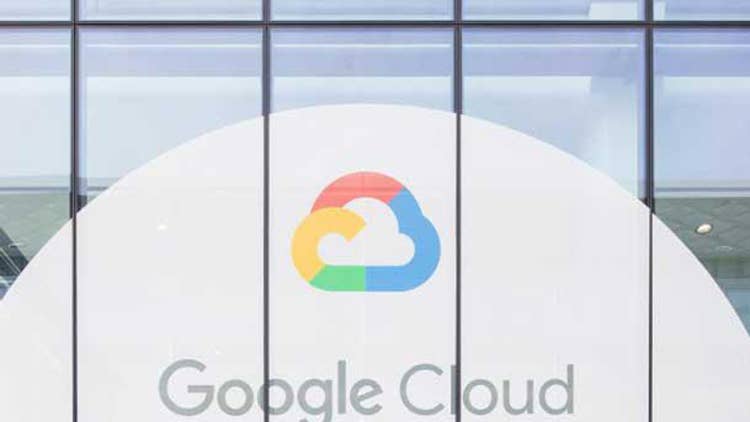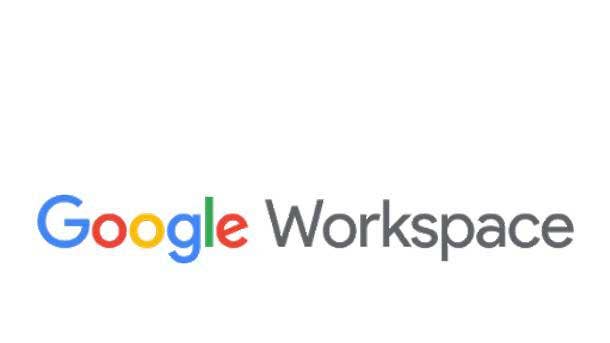Google Cloud CEO Thomas Kurian On 10 Hot Topics: Deutsche Bank Technology Conference
Kurian speaks about Google Cloud’s four ‘flavors’ of partners and its differentiated platform offering, security posture, multi-cloud and vertical market strategies, and data analytics strengths among other topics.

When it comes to its go-to-market strategy, Google Cloud looks to leverage four “flavors” of partners, according to CEO Thomas Kurian.
“We look at partners in four ways: partners that can complement our solution offering; partners that can help us deliver jointly new solutions to customers; partners that bring implementation and change management expertise; and then partners that broaden our distribution reach,” Kurian said during Deutsche Bank’s 2021 Technology Conference that runs virtually through today.
Kurian touched on two of those partner “flavors” during a fireside chat with Brad Zelnick, Deutsche Bank’s head of software equity research, starting with partners that complement Google Cloud’s solution portfolio.
There are many technology areas, including security, where Google Cloud works with partners such as Palo Alto Networks, Cybereason and Splunk to offer a more holistic solution to customers, according to Kurian.
“Similarly, in analytics and data, we offer solutions with organizations like Informatica, with Tableau and others to offer customers a more complete solution,” he said. “With software vendors that build applications, we work closely with organizations — Workday, SAP and others that work across industries — so we can offer solutions to multiple industries.”
Google Cloud’s partnerships targeting specific industries include its telecommunications work with Ericsson to deliver joint solutions that provide customer Telecom Italia new capabilities for its 5G network.
Helping an organization adopt cloud is not just a question of “putting the solution in front of them, but making sure those solutions can be adopted,” Kurian said.
“Often that requires change management of people in the organization as well to adopt the technology, and we work very closely with a number of partners — Accenture...Deloitte, Infosys — and each of them have practices that they have built around our product portfolio,” Kurian said. “That helps us also bring clients to them jointly and to be able to deliver the promise of cloud to clients together.”
Click through to read about Kurian’s thoughts on Google Cloud’s differentiated platform offering, security, data analytics, profitability and multi-cloud and vertical market strategies, in addition to Google Workspace.

Google Cloud Platform’s Differentiated Offering
What’s really driving (GCP) is that shift to digitization has introduced five or six new requirements in organizations, and we designed our cloud to support these needs.
When you talk to larger companies now, there’s a fundamental belief that they’re going to use technology from multiple cloud players, something called multi-cloud. For example, (communications technology company) TELUS and their networking: They use technology from many, many companies, but the multi-cloud technology from us is a foundation for it.
Secondly, data is now — particularly with the shift to digital, whether it’s understanding your customer, understanding your infrastructure…your network, if you’re a carrier, like the work we’re doing with Vodafone as their data platform — becoming the fuel for organizations.
Third, any time you put a lot of data into a system, you increasingly read of all kinds of new cyberattacks coming in. And there’s enormous interest in Google’s expertise in providing both the secure cloud as well as security tools to protect against cybersecurity. We see that as a big differentiator in our history as a secure technology company now translating into how can we secure companies’ systems as they move to the cloud.
Lastly, every business executive wants to see faster value in their transformation, whether it’s faster value in how they run their supply chain, how they forecast demand, how they serve customers. We’ve built a set of industry solutions, and they’re being used by lots of organizations. LVMH, for example, in retail, wanted to change how they interact with their luxury customers, and we’re helping them with some of our industry solutions in retail. That effort has also been very important.
Lastly…as organizations look over a multiyear time frame on their sustainability commitments, we’re seeing a lot of interest in the fact that we run a green cloud. We’ve been carbon-neutral since 2007, so 14 years now. And whether it’s (consumer goods company) Unilever or various other organizations, we see that as a big source of interest in helping them meet their sustainability objectives.

Google Cloud Security
We are focused on three important things. One, how to make sure that the way software is built is secure to avoid things like the SolarWinds attack, which was a cybersecurity attack through a compromise in the software supply chain. Second, how do we protect people when they run their workloads in Google Cloud, so the security of Google Cloud. And third, how do we give them tools to understand their threat posture and protect them, no matter where they run their workloads, which is security for your enterprise. And we have lots of organizations using our platform for all three of these things just as a secure cloud infrastructure.
One of the big things we’ve done is we brought financial institutions like BBVA, stock exchanges like the London Stock Exchange and a variety of others — Equifax for example in the financial markets — to run on top of our cloud, because of the security it provides.
Every cyber event, to some extent, is a “black swan” event. The organization thinks it’s secure, a cyber security event happens, and then they don’t have a way of measuring their risk posture. So what we felt was, just like any other risk, cyber security should be measurable. It should be measured as a risk that you can manage, and our platform in Google Cloud provides organizations not only the ability to protect themselves, but to measure their posture. And now we offer cyber insurance to companies running their technology in our cloud because of the capabilities that we offer. We’re getting a lot of interest, particularly as the threats grow and the impacts of the threats grow.

Why Customers Are Turning To Google Cloud For Data Analytics
Our capabilities in data analytics are super simple: We want to allow people to combine structured and unstructured data in real-time, as well as large-scale processing, no matter where that data originates from — our cloud or other clouds. If you use Gillette, for example, as a razor, the forecasting of demand for how many razors to manufacture and how to be more accurate in where you need to distribute them, that’s done on our cloud. If you ordered a package, and you wanted to track its delivery, we work super closely with UPS, using our data cloud to help them optimize how long and how efficiently their trucks and their fleet can be scheduled. If you look at Best Buy in the…consumer electronics business, they want to be much more accurate in understanding their customers and merchandising products for them, and their whole data platform in the retail business runs in our cloud.
And then lastly, many, many hospital systems, when a doctor talks to a patient, they need to have a full view of the record of the patient, all of their history, what their biomedical factors may be, the genetic predisposition for certain diseases. And we’ve helped many organizations use that data platform to serve people.
An example of a project that we’re super proud of is we’ve done work with a company in Brazil to deliver...virtual care during COVID to 30 million people in the Amazon. And in order for them to be able to deliver that care, they needed a data platform that could pull all of their data together, and our work with Keralty...has facilitated that.
Data permeates many, many parts of the business in organizations, and our capability and our expertise and our scalable data platform as well as our machine learning (ML) tools are now helping many, many organizations use this capability.

The Importance Of A Multi-Cloud Strategy
When the internet was (emerging) years ago, imagine you had certain web pages that only showed up in Microsoft’s browser and other web pages that only showed up in Netscape’s browser, and yet another set of web pages that only showed up in Firefox. You wouldn’t have the internet. And so from our point of view, cloud is going to be a transformational infrastructure. People should be able to develop their applications and run them on any cloud of their choice, but not be locked into the cloud.
Secondly, they should be able to use infrastructure from multiple companies in concert. They can use data from Google along with other technology from other cloud providers side-by-side, and you should be able to manage multiple clouds, their security and operational requirements in a much more consistent way.
Lastly, particularly as technologies like 5G come out, the need to distribute processing closer to the user leads to things like edge cloud. And increasingly we see that carriers, many of whom we work with, want a much more portable infrastructure for the edge. So this notion of an open cloud that allows choice for multiple companies is now helping us solve real problems.
We’ve got…(customer) J.B. Hunt in the transportation and logistics market. They wanted to continue to containerize and move their applications and have choice in adopting technology from multiple companies. (Telecommunications company) TELUS, in their network operations, wanted to use our cloud to transform their network, but they wanted to build their technology in a much more modern way, using modern cloud-native technology, and that allows them to use a much more open architecture.
You’ve been reading about some outages that occurred with some of the cloud providers in Japan recently. Many companies ask us can they run their workloads across multiple cloud providers to provide, for example, better resilience and reliability. Our design center has been able to facilitate that to make that possible for people and then let them choose the best cloud provider for their need.

Google Cloud’s Go-To-Market Strategy
We see our go-to-market, first of all, in three or four different lenses. One, we have shifted as an organization from talking about technology…to products, to solutions. Customers want to have us understand their business, the opportunity to transform their business and then provide solutions to their business problems as opposed to coming in and talking about how great our technology is. So that’s been a big change in selling methodology and approach.
A second thing that we’ve done is we’ve organized our sales organization around industries, because different industries have different needs. In financial services, for example, the use of data may be for fraud detection, may be for regulatory reporting, may be for financial market simulation. In contrast, in retail, it may be about personalization, inventory management, supply chain optimization, etc. So, we’ve segmented our sales force by industry, so that we can build greater competency in understanding customer needs.
Third, to be honest, the last 18 months have been almost all digital in our engagement with customers. Just because of the pandemic, you’re forced to engage with customers in a digital medium, and we’ve learned how to do that really well. Even as we brought in a lot of new salespeople and grew the organization, we also got them engaged with customers through digital media, and that’s helped bring a certain degree of efficiency in our scaling the distribution organization.
And lastly, we would not be where we are without our partners. We’ve always felt strongly we’re a products and solutions company. We have to have an ecosystem, and the ecosystem has helped us scale the business really well. We’re working super well with our partners in a variety of different parts of the world. A lot of this is credit to the senior talent that we brought into the sales organization. They know how to sell, they know how to do relationship selling. Many people asked us how will you build 20 years or 30 years of selling experience quickly. One, we brought in some of the best talent who had that experience, but two, we equipped them with new selling methodology, so that they could use digital tools and digital ways of selling.

Google Cloud’s Vertical Market Strategy
A lot of our focus with our technology is not just modernizing the IT landscape within an organization, but also bringing our expertise in analytics and data processing, as well as machine learning and AI (artificial intelligence) to service the needs of the business that are outside of traditional IT.
What we’re doing is taking our expertise in machine learning and AI, and then applying it to specific problems in each industry. In retail, many people, with the shift to e-commerce, want to understand how can they get the expertise of Google Search but on their website to help people find products faster. How do they understand the behavior of the person, so they can personalize much richer? And how do they get very accurate product recommendations? We’ve used our expertise in ML and AI, and built a product offering for search, one-to-one personalization and recommendation. That then leads to more accurate demand forecasting. That work is going on at Lowe’s and Home Depot and a variety of other places.
In financial services...when the shift to digital happened, people wanted to accelerate the speed with which mortgages, loans, credit card applications could be processed. And using our expertise in document processing and our machine learning tools, we’ve helped enormously speed up the whole lending industry. There was an announcement, for example, with Lendi, which is the primary lending platform in Australia, where they’re using our machine learning tools to automate the whole process of lending. We also have work going on in financial fraud detection based on our own expertise in payments and the need to manage fraud, and we’re working with many of the leading institutions there.
So in each industry, not only are we providing horizontal technology, but we’re also taking important business problems and providing solutions to those business problems. And they help us obviously get much deeper into accounts. They help us deliver a value-oriented offering rather than infrastructure alone, and it opens many doors for us as a new entrant into the cloud space.

Google Cloud’s Deepest Partnerships
The fundamental thing that we see is that with the shift to digital, many, many organizations are wanting to go directly to customers — whether that’s a car company wanting to understand customers and offer products directly to customers, whether that’s financial institutions that were traditionally focused on institutional finance wanting to offer new products and services.
The deepest partnerships we have are those that connect the broad consumer ecosystem and our understanding of that digital consumer ecosystem with their technology infrastructure. And if you look at all of the big partnerships we’ve announced, many span (Google Cloud parent company) Alphabet, but they are about bringing those two ecosystems together. We are uniquely positioned because we have deep technology expertise to help enterprises. But we can also bring the consumer ecosystem, and our history with them and our reach with them brings that together.
If you look at (television network) Univision, their vision is to be the leading Spanish language broadcaster, but also to deliver new services — not just to offer broadcasting — to the broad market in Latin America. It requires them to understand how to deliver high-quality, over-the-air-type services, which we have expertise in. But we also have lots of deep expertise in Search and Ads and YouTube, (and) all of that can be brought together to help innovation.
If you look at (automaker) Ford, they wanted to transform every aspect of the vehicle experience — the way that somebody goes online, looks at their product, experiences the product and buys it — so our expertise in Search and Ads helps there. How people experience the car when you’re in the car…our experience with Android, for example, and our Google Automotive Services in the car can help people. And then how the car can be manufactured better, how the data from the car can be processed to deliver predictive maintenance, warranty, management, etc. — that’s where our cloud technology comes in. So as products, as industries digitize, this need to link that consumer ecosystem and experiences with the enterprise technology footprint really gives us an opportunity not just to work with these companies as a cloud technology provider, but as a transformation partner.

Google Workspace
We are seeing huge interest and strong growth in Workspace because of three important things that we see changing the nature of work.
First of all, the people want digital tools to collaborate. Most products were written for the sort of professionals — some people call it the white-collar workforce —which were office workers. We work with (healthcare system) Ascension…and they have far more nurses and doctors than they have professional office workers, and those people today need collaboration tools. A nurse talking to a patient wants to consult a doctor. They have a smartphone, and they want a tool and a product for communication and collaboration that was optimized for that experience. So our product helps these…”first-line” workers to collaborate in new ways.
The second is, traditionally, tools were designed only for collaboration within the boundary of an organization. But now with digital taking over, many companies want to collaborate beyond the boundary of the organization. And when I say beyond the boundary of an organization, take (aerospace corporation) Airbus, a big client of ours. They want to collaborate not just (among) Airbus employees, but they want to collaborate with the vendors. They want to share their demand forecasts and supply requirements with all their suppliers. And they want a tool that will help them and a platform to share and collaborate in a secure way outside of their organization.
The third is we’re seeing a lot of interest in digitizing workplaces. For example, a...retail branch of a bank is a digital office — an office for the tellers who service clients. Now, many financial institutions are talking to us about using our collaboration platform, but as a vehicle to create a digital branch. It’s digitizing offices and workplaces that no longer can be just physical, but need also a digital representation. All three are driving growth of Workspace.
And lastly, because communication is so private, and lots of corporate data happens to be exchanged in a private fashion over email, for example, we’re seeing a lot of interest because of the security of Workspace. We have clients — whether it’s Nielsen that does audience analysis and shares data to help people be more targeted and marketing; whether it’s Netflix, which is using our collaboration tools to help their creators work together in a more effective way; whether that is financial institutions using us to communicate to clients in new ways; hospital systems — all of these need new collaboration platforms. And Google Workspace was designed for that new mode of communication working together.

Google Cloud’s Infrastructure Footprint
(Google Cloud has 27 cloud regions, 82 availability zones and 146 network edge locations.)
We continue to expand in markets, because as we see demand...in different markets, we are bringing our technology closer and closer by going to each country. We’ve expanded, for example, in India, in Melbourne (Australia). We had an announcement just earlier this week...with a big expansion in Germany, and you’ll see us continuing to broaden our regional footprint.
That said, even on top of that, as cloud becomes an important technology infrastructure in different countries, there are new regulatory requirements coming in — this notion of sovereign cloud, and the ability to require data to be located in each country. And we have capability on top of our cloud to provide this sovereign capability in many, many different parts of the world. That’s also broadening our addressable market, because we’re meeting these regulatory requirements.
Lastly, we’ve also introduced new products for organizations that need super-low latency. And they say, “Well look, I’d love to move everything to the cloud, but I have an application that’s running, for example, on a mainframe, (and) I want your analytic tools next to mine.” We’ve also introduced private cloud offerings that can now run inside our corporate data center. And so broadening our regional footprint, moving into private cloud or hybrid cloud with a new offering and then addressing sovereign requirements, these are all about continuing to expand our total addressable market and providing new opportunities for people to work with us and use our technology.

Google Cloud Profitability
(Google Cloud’s operating loss dropped to $591 million in the second quarter that ended June 30, from $1.43 billion in the same quarter of 2020.)
We continue to invest in the business to scale the business and to build the right product and services for customers.
This is an economies of scale business, because there’s a certain amount of investment you have to have in products. You have a certain amount of investment you have to have in a network of data centers, certain amount of investment that you need to have in a go-to-market organization. And the larger you get, that amortizes across a larger customer base and a larger revenue base. So we are very focused...on investing to ensure we succeed in the market, and you’ve seen our growth. And as we grow, and given the fundamental nature of our business, we have shown that we have been able to improve margins.